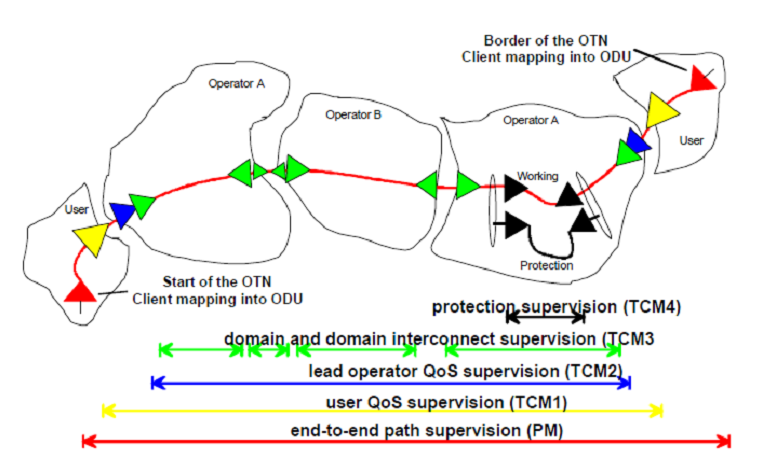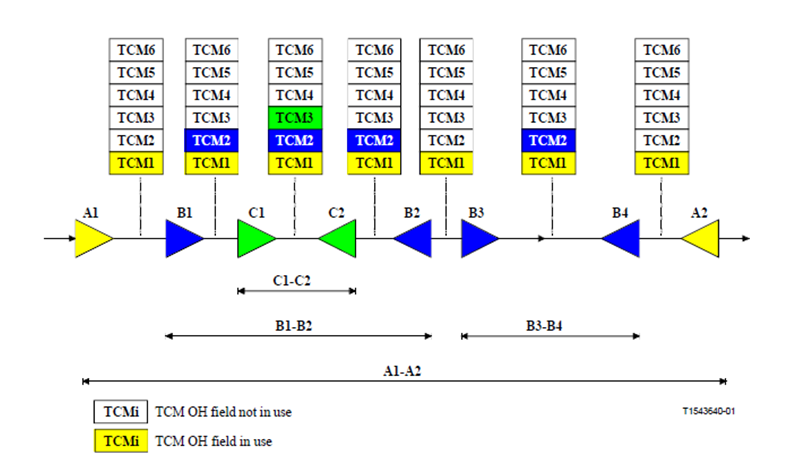Tandem Connection Monitoring (TCM)
Tandem system is also known as cascaded systems.
SDH monitoring is divided into section and path monitoring. A problem arises when you have “Carrier’s Carrier” situation where it is required to monitor a segment of the path that passes another carrier network.

Tandem Connection Monitoring
Here Operator A needs to have Operator B carries his signal. However he also needs a way of monitoring the signal as it passes through Operator B’s network. This is what a “Tandem connection” is. It is a layer between Line Monitoring and Path Monitoring. SDH was modified to allow a single Tandem connection. ITU-T rec. G.709 allows 6.
TCM1 is used by the User to monitor the Quality of Service (QoS) that they see. TCM2 is used by the first operator to monitor their end-to-end QoS. TCM3 is used by the various domains for Intra domain monitoring. Then TCM4 is used for protection monitoring by Operator B.
There is no standard on which TCM is used by whom. The operators have to have an agreement, so that they do not conflict.
TCM’s also support monitoring of ODUk connections for one or more of the following network applications (refer to ITU-T Rec. G.805 and ITU-T Rec. G.872):
– optical UNI to UNI tandem connection monitoring ; monitoring the ODUk connection through the public transport network (from public network ingress network termination to egress network termination)
– optical NNI to NNI tandem connection monitoring; monitoring the ODUk connection through the network of a network operator (from operator network ingress network termination to egress network termination)
– sub-layer monitoring for linear 1+1, 1:1 and 1:n optical channel sub-network connection protection switching, to determine the signal fail and signal degrade conditions
– sub-layer monitoring for optical channel shared protection ring (SPRING) protection switching, to determine the signal fail and signal degrade conditions
– Monitoring an optical channel tandem connection for the purpose of detecting a signal fail or signal degrade condition in a switched optical channel connection, to initiate automatic restoration of the connection during fault and error conditions in the network
– Monitoring an optical channel tandem connection for, e.g., fault localization or verification of delivered quality of service
A TCM field is assigned to a monitored connection. The number of monitored connections along an ODUk trail may vary between 0 and 6. Monitored connections can be nested, overlapping and/or cascaded.

ODUk monitored connections
Monitored connections A1-A2/B1-B2/C1-C2 and A1-A2/B3-B4 are nested, while monitored connections B1-B2/B3-B4 are cascaded.
Overlapping monitored connections are also supported.

Overlapping ODUk monitored connections


